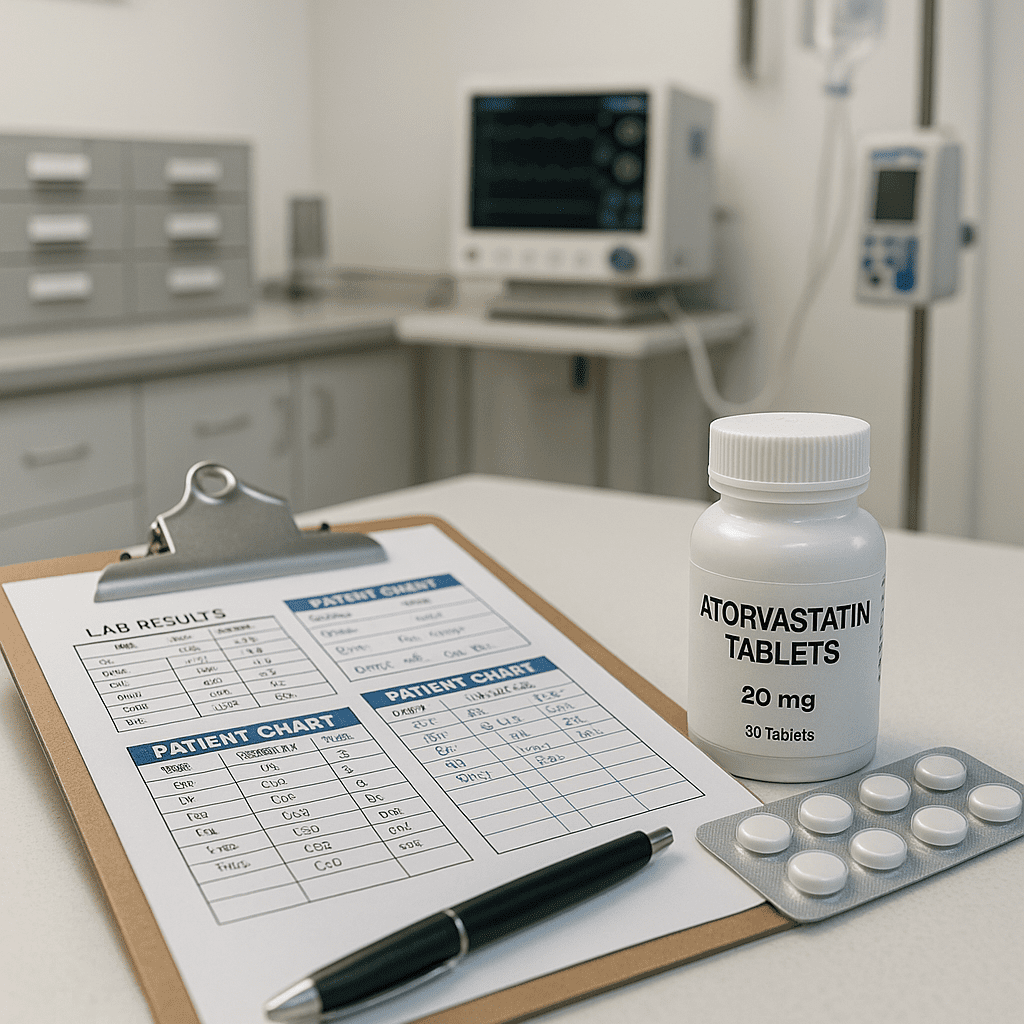Atorvastatin, a widely prescribed statin, is used to lower cholesterol and reduce the risk of cardiovascular disease. For every registered nurse (RN) and nursing student preparing for the NCLEX, understanding atorvastatin’s nursing responsibilities is essential. This guide covers patient assessment, monitoring, patient education, and safety measures—critical knowledge for bedside nursing and NCLEX preparation. Using a nursing bundle with pharmacology content can reinforce these concepts for RN nurses.
💊 Overview of Atorvastatin
Atorvastatin belongs to the HMG-CoA reductase inhibitors (statins). It works by blocking cholesterol synthesis in the liver, lowering LDL (“bad”) cholesterol and triglycerides, while slightly increasing HDL (“good”) cholesterol.
Primary Uses:
- Hyperlipidemia
- Prevention of cardiovascular events (heart attack, stroke)
- Patients with diabetes or metabolic syndrome at high cardiovascular risk
🩺 Nursing Responsibilities Before Administration
Before giving atorvastatin, a nurse must perform several key assessments:
- Review Baseline Labs
- Liver function tests (AST, ALT) to detect pre-existing hepatic issues.
- Lipid panel to monitor treatment effectiveness.
- Monitor creatinine kinase (CK) if patient reports muscle pain (risk of myopathy or rhabdomyolysis).
- Check Patient History
- Assess for liver disease or alcohol abuse.
- Review medication interactions (e.g., warfarin, certain antibiotics, grapefruit juice).
- Document previous allergic reactions to statins.
- Assess Vital Signs
- Atorvastatin doesn’t usually alter blood pressure or heart rate directly, but baseline vitals help monitor overall cardiovascular status.
⚠️ Monitoring and Side Effects
Common Side Effects:
- Mild gastrointestinal issues: nausea, diarrhea, constipation
- Headache
- Muscle pain (myalgia)
Serious Side Effects:
- Rhabdomyolysis: muscle breakdown causing dark urine and kidney injury
- Hepatotoxicity: elevated liver enzymes
- Allergic reactions: rare, but include rash, itching, swelling
RN Nursing Interventions:
- Educate patients to report unexplained muscle pain, weakness, or dark urine.
- Monitor liver function tests periodically.
- Encourage patients to avoid excessive alcohol intake.
- Evaluate for drug interactions.
🧠 NCLEX Tips for Nurses
NCLEX questions may focus on:
- Recognizing early signs of statin-induced myopathy.
- Knowing contraindications for atorvastatin.
- Teaching patient education points about statin therapy.
- Understanding lab monitoring priorities.
Key Nursing Concepts:
- Statins can cause liver toxicity → monitor AST/ALT.
- Muscle pain may indicate rhabdomyolysis → check CK and renal function.
- Medication adherence is crucial for cardiovascular risk reduction.
📝 Patient Education Responsibilities
As a registered nurse, providing thorough patient education is a priority:
- Take atorvastatin once daily, preferably in the evening.
- Do not skip doses or stop therapy without consulting the provider.
- Maintain a low-fat, cholesterol-lowering diet and exercise regularly.
- Avoid grapefruit and grapefruit juice, which can interfere with metabolism.
- Report any unexplained muscle pain or weakness promptly.
Using a nursing bundle can help students and RNs memorize these patient teaching points effectively.
💬 Key Takeaway for RN Nurses
For RN nurses, atorvastatin care involves assessment, monitoring, patient education, and safety vigilance. Proper knowledge ensures safe administration, reduces risk of complications, and reinforces NCLEX readiness. Mastery of atorvastatin nursing responsibilities demonstrates a strong foundation in cardiovascular pharmacology and patient-centered nursing care.
✅ FAQ: Atorvastatin Nursing Responsibilities
Liver function tests (AST, ALT), lipid panel, and creatinine kinase (if muscle pain occurs).
Rhabdomyolysis (muscle breakdown) and hepatotoxicity (liver damage).
No. Grapefruit can interfere with metabolism and increase the risk of toxicity.
Take once daily, follow a low-fat diet, report muscle pain, and avoid stopping without medical advice.
Yes, especially in questions regarding cardiovascular pharmacology, patient safety, and nursing interventions.

